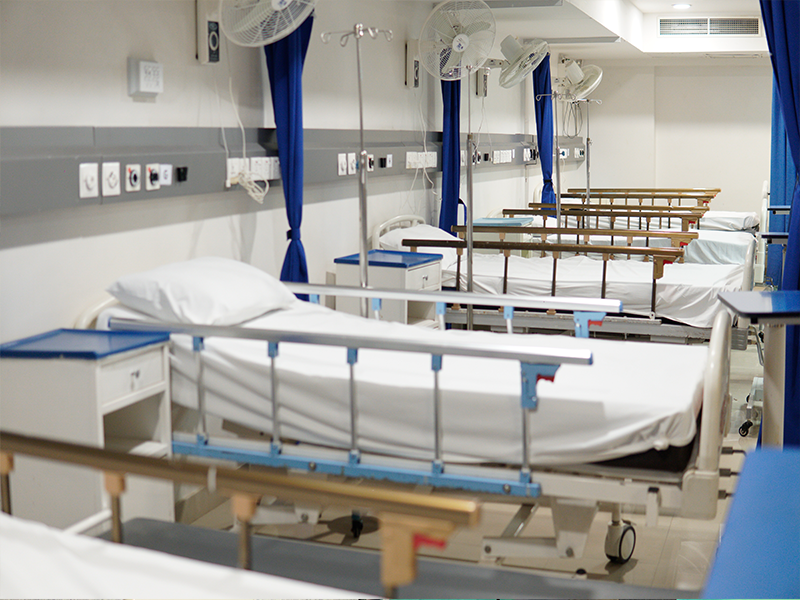In an era where technology is rapidly reshaping healthcare, patient engagement is becoming a key focus for hospitals seeking to improve patient experiences and outcomes. One innovative solution gaining traction in this realm is the integration of smart TV remotes in healthcare settings. This article delves into the future of patient engagement through smart TV remotes in hospitals, exploring their potential benefits, challenges, and real-world applications.
Understanding Patient Engagement
Before diving into the specifics of smart TV remotes, it’s essential to understand what patient engagement entails. Patient engagement refers to the involvement of patients in their own healthcare processes, including treatment decisions, adherence to care plans, and communication with healthcare providers. Engaged patients are more likely to:
- Adhere to treatment plans
- Experience better health outcomes
- Utilize healthcare resources more effectively
- Report higher levels of satisfaction with their care
As healthcare providers increasingly recognize the importance of patient engagement, innovative technologies are being employed to facilitate it. Smart TV remotes serve as a promising tool in this regard.
What Are Smart TV Remotes?
Smart TV remotes are devices that allow users to navigate and control smart television systems. In the context of hospitals, these remotes can be equipped with specialized software and features tailored for patient use. They can provide access to various multimedia content, educational resources, and interactive services, all aimed at enhancing the patient experience.
Benefits of Smart TV Remotes in Patient Engagement

Integrating smart TV remotes into hospital rooms can offer numerous benefits, including:
- Access to Information: Patients can access educational videos about their conditions, treatment options, and recovery processes. This information empowers patients to take an active role in their healthcare.
- Entertainment Options: Providing entertainment options such as movies, games, and streaming services can help alleviate stress and anxiety during hospital stays. Keeping patients entertained can contribute to improved mental well-being.
- Communication Tools: Smart TV remotes can facilitate seamless communication between patients and healthcare providers through video calls or messaging features, enabling quick responses to patient inquiries.
- Personalized Experiences: By allowing patients to customize their preferences, such as language and content type, hospitals can create a more personalized experience that caters to individual needs.
Case Studies: Successful Implementations

Several hospitals and healthcare systems have already begun implementing smart TV remotes to enhance patient engagement. Here are a few notable examples:
Example 1: Mount Sinai Health System

Mount Sinai Health System in New York City integrated smart TVs in patient rooms, allowing patients to access educational content about their diagnoses and treatment plans. The initiative resulted in a 20% increase in patient understanding of their conditions and treatment options, as reported in a study published in the Journal of Healthcare Management.
Example 2: Cleveland Clinic

Cleveland Clinic launched a smart TV program that enabled patients to order meals, request assistance, and access entertainment. A survey conducted post-implementation revealed that 85% of patients felt more engaged in their care, with many appreciating the ease of access to information about their health.
Challenges and Considerations
While the potential benefits of smart TV remotes in hospitals are significant, there are also challenges and considerations that healthcare providers must address:
- Technology Training: Staff and patients may require training to effectively use smart TV remotes, which can be a barrier to implementation.
- Privacy and Security: Ensuring the privacy and security of patient information accessed through smart TVs is paramount to maintaining trust and compliance with regulations such as HIPAA.
- Cost: The initial investment in smart TV technology can be substantial, and hospitals must weigh the potential return on investment against costs.
- Content Relevance: It’s crucial to curate content that is relevant, accurate, and aligned with patients’ needs. Inadequate or irrelevant content can lead to frustration rather than engagement.
The Role of Data and Analytics

Data and analytics will play a critical role in optimizing the use of smart TV remotes in hospitals. Through data collection and analysis, healthcare providers can:
- Monitor Usage: Track how often patients access different features, which can inform content updates and enhancements.
- Gather Feedback: Solicit patient feedback on their experience with smart TV remotes to identify areas for improvement.
- Personalize Content: Use data to tailor content and services to individual patient preferences and needs.
Looking Ahead: The Future of Smart TV Remotes in Healthcare

The future of smart TV remotes in hospitals is promising, with advancements in technology and patient-centered care driving their evolution. Some potential future developments include:
- AI Integration: Artificial intelligence could be utilized to provide personalized recommendations for content based on a patient’s preferences and medical history.
- Interactive Health Tools: Future smart TV remotes may include interactive tools that allow patients to track their recovery progress or participate in virtual rehabilitation programs.
- Telehealth Services: Enhanced telehealth capabilities could enable patients to have real-time consultations with healthcare providers directly from their hospital room.
As healthcare continues to evolve, patient engagement will remain a cornerstone of effective care delivery. Smart TV remotes in hospitals represent an innovative approach to enhancing patient experiences and empowering individuals to take an active role in their healthcare journey. While challenges exist, the potential benefits—ranging from improved information access to enhanced communication—are undeniable. By leveraging technology thoughtfully, healthcare providers can create a more engaging and supportive environment for patients, ultimately leading to better health outcomes and satisfaction.
In summary, the integration of smart TV remotes in hospitals is not just a trend but a step forward in the ongoing quest to enhance patient engagement and care quality. As hospitals explore this technology, the focus must remain on patient needs, privacy, and effective implementation to unlock the full potential of this innovative tool.


